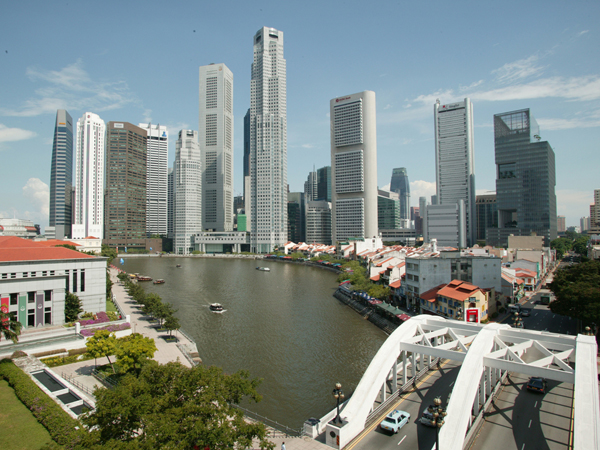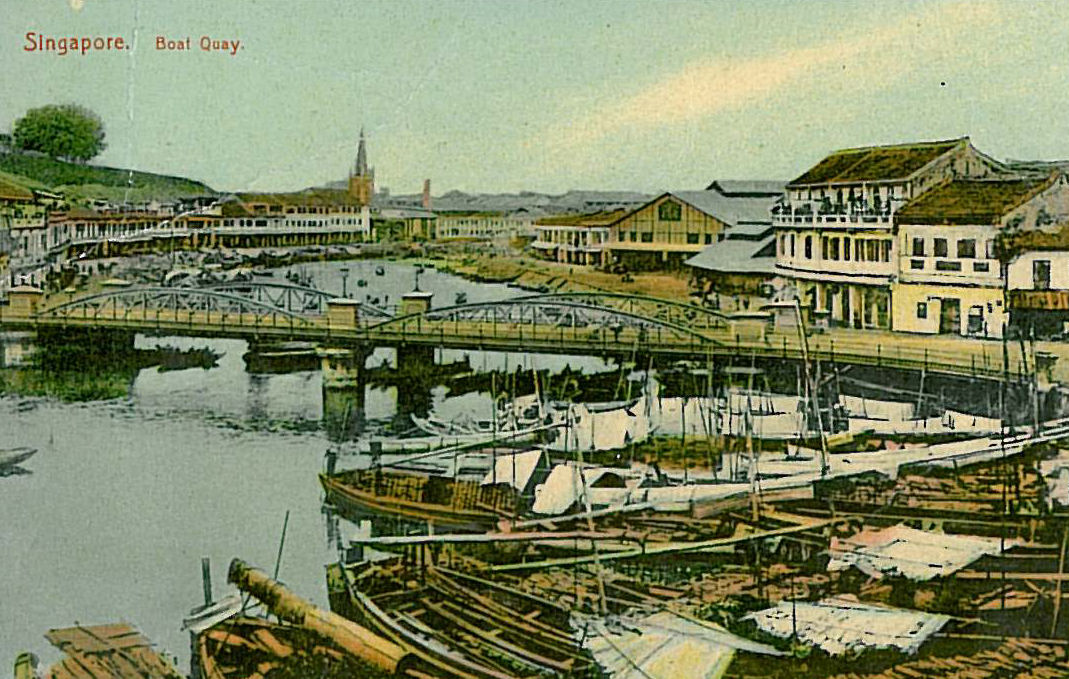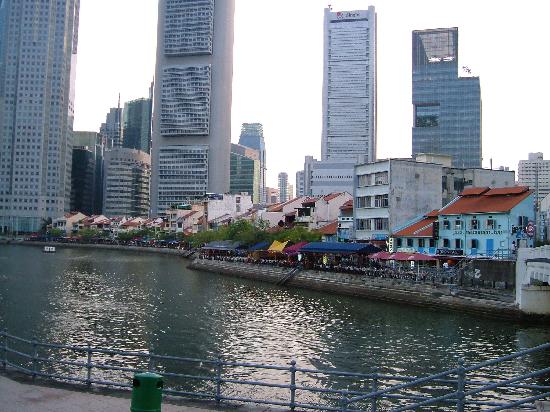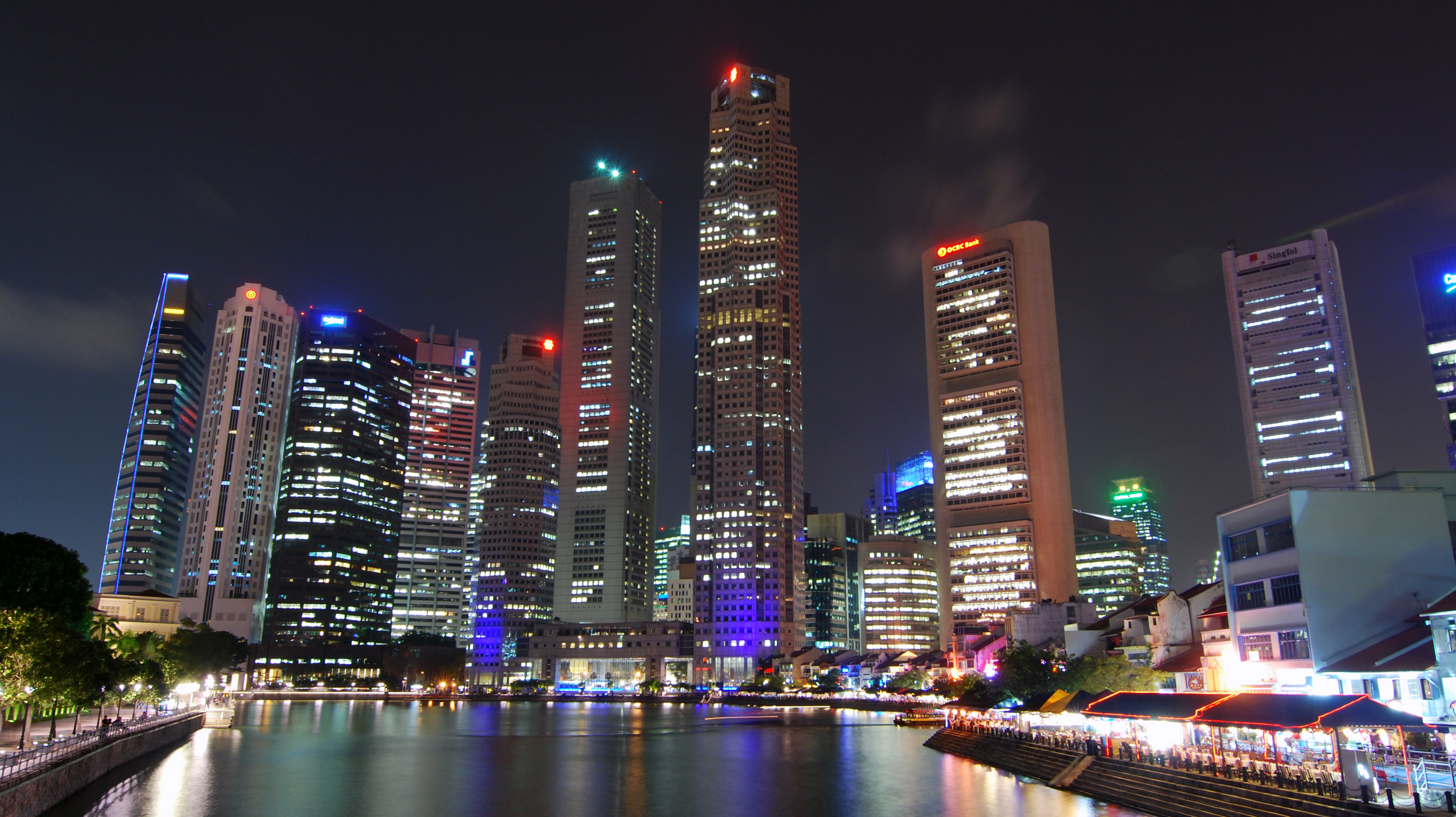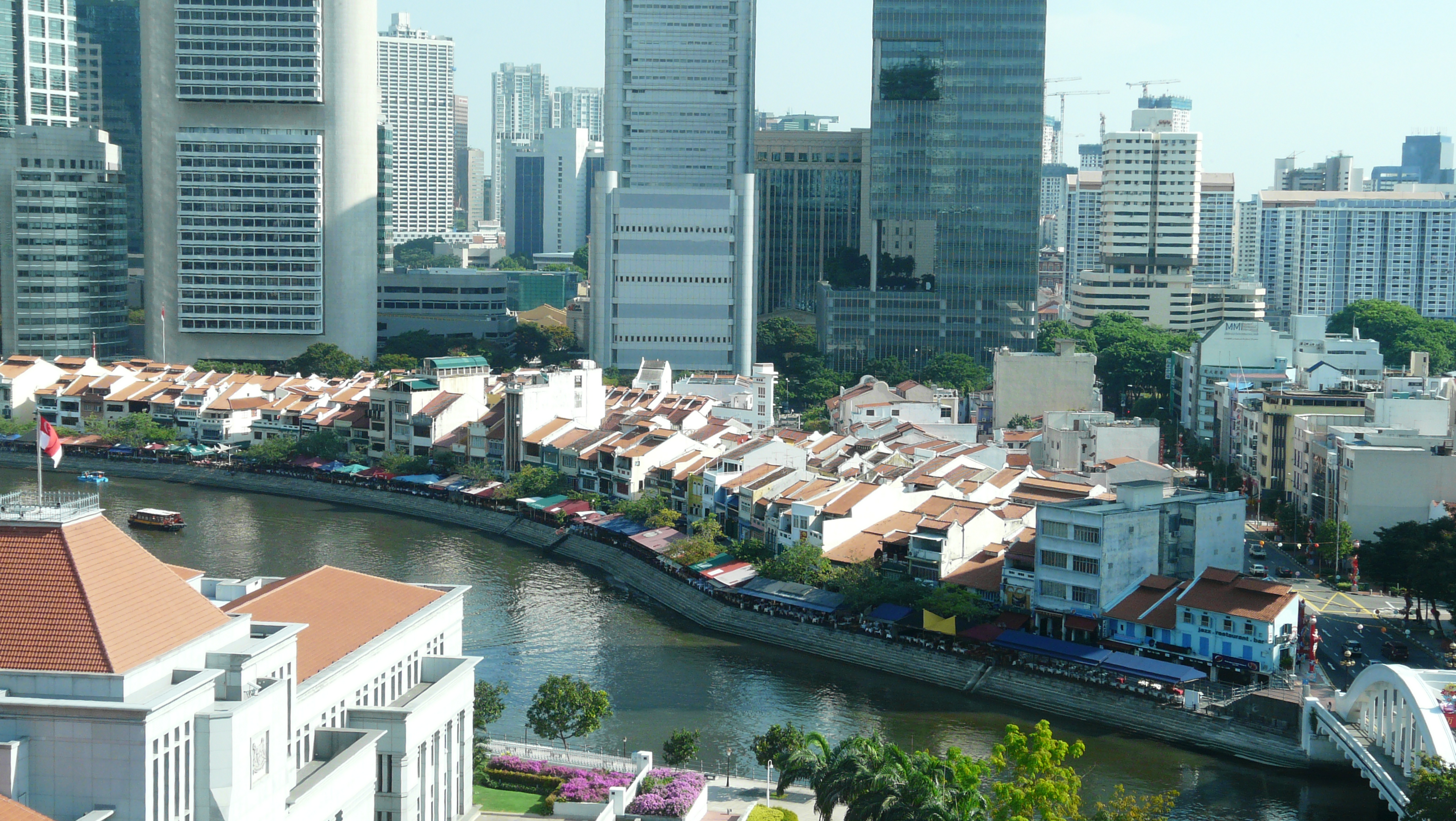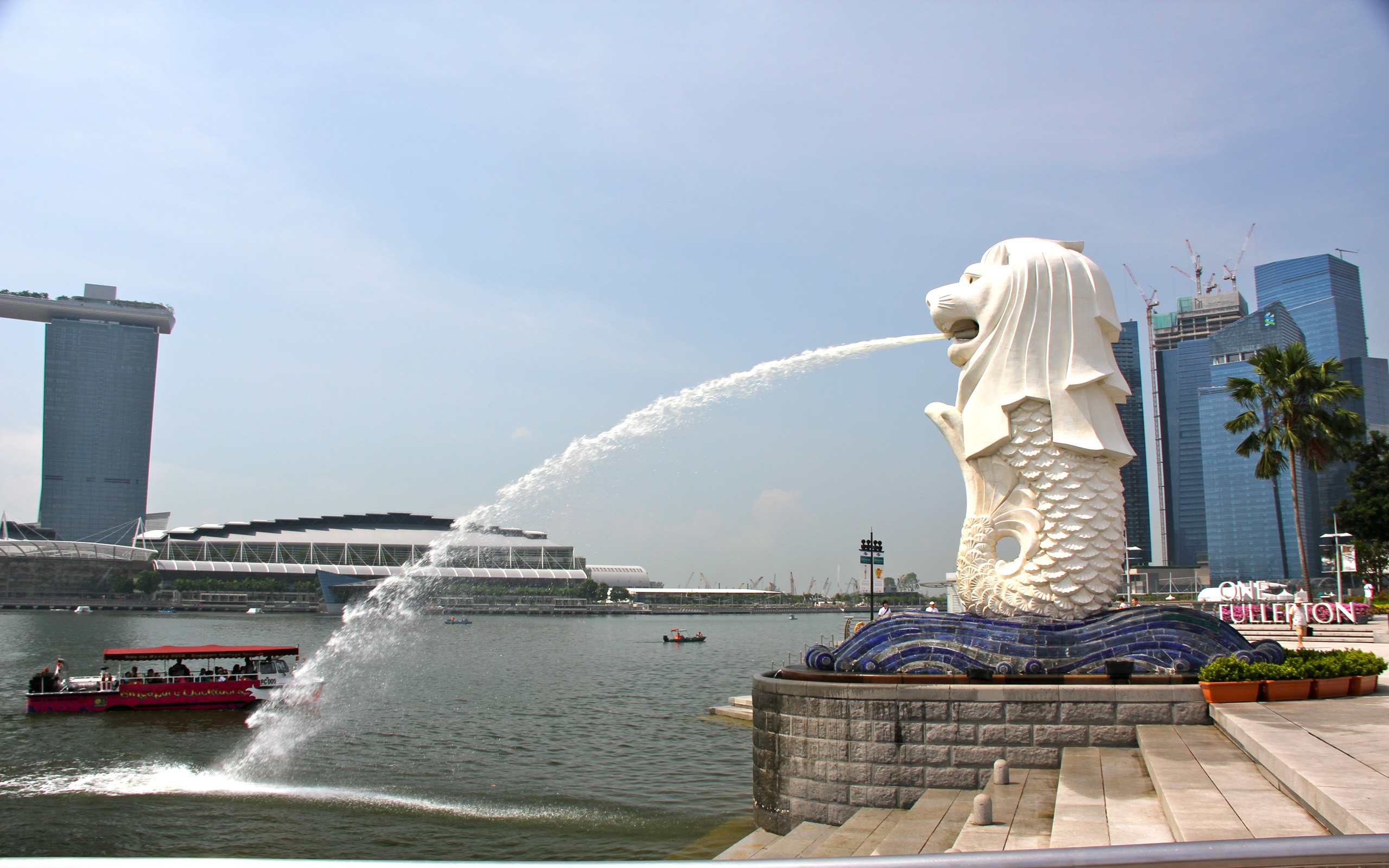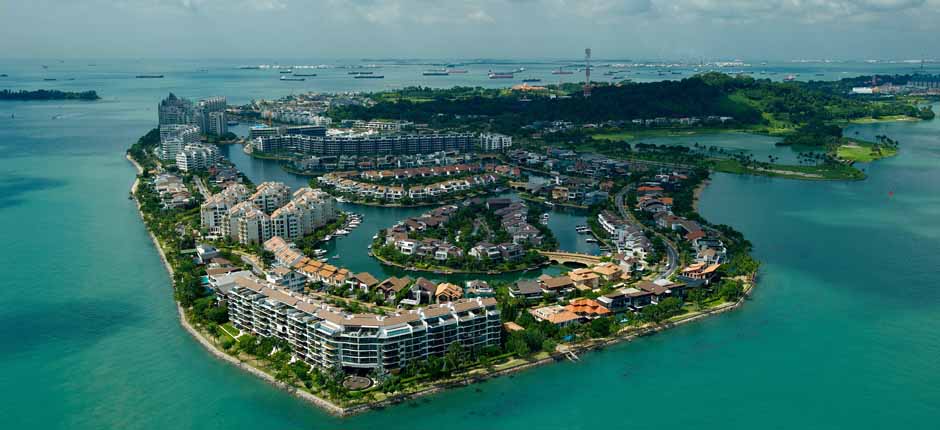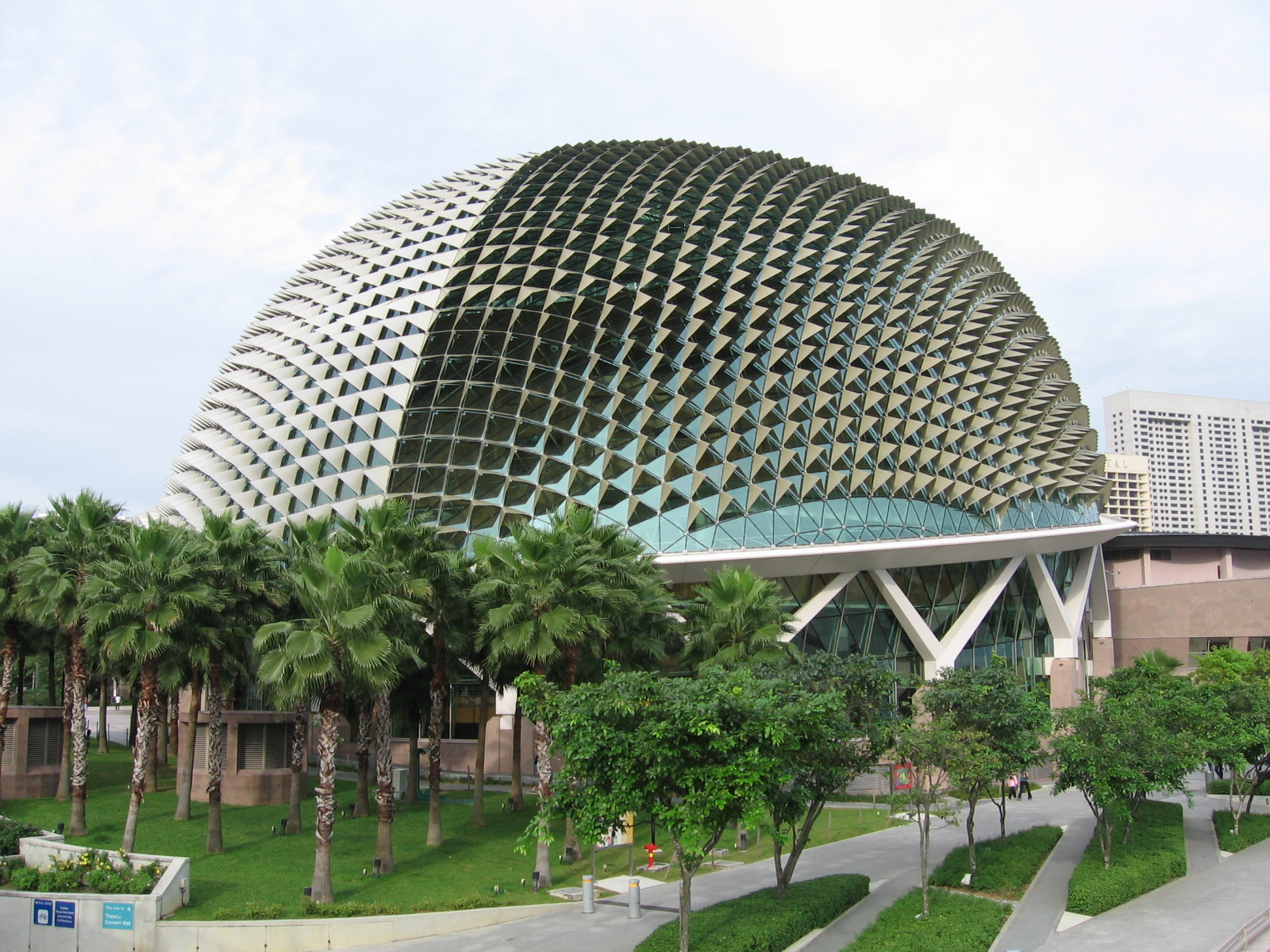Singapore /Singapore /Singapore
Sight Address : Near Singapore River, Singapore, Singapore (Downtown Core) 49782.Edit
Detail InformationEdit
Boat Quay is a historical quay in Singapore which is situated upstream from the mouth of the Singapore River on its southern bank.It was the busiest part of the old Port of Singapore, handling three quarters of all shipping business during the 1860s. Because the south of the river here resembles the belly of a carp, which according to Chinese belief is where wealth and prosperity lay, many shophouses were built, crowded into the area.Though serving aquatic trade is no longer Boat Quay’s primary role, the shophouses on it have been carefully conserved and now house various bars, pubs and restaurants. Therefore Boat Quay’s social-economic role in the city has shifted away from that of trade and maritime commerce, and now leans towards more of a role accommodated for tourism and aesthetics for the commercial zone of which encloses the Singapore River. It is the soft front to the composolitian banking and financial sectors lying immediately behind it.Boat Quay is also the name of the road along the quay, which has since been converted into a pedestrian mall.
HistoryEdit
Since the founding of modern Singapore in 1819, the Singapore River was the artery for much of the island’s trade and economic activities. The south bank of the river, where most of the commerce took place, is known as Boat Quay.In the 1820s, the area was swampy and built over with raft houses occupied by local traders. It was reclaimed with earth taken from a small hill where Commercial Square, now Raffles Place, stands.As early as 1822, Sir Stamford Raffles had already designated the area south of the river to be developed as a Chinese settlement. Boat Quay was completed in 1842 and the Chinese, mostly traders and labourers, settled there in large numbers. Conditions were squalid but Boat Quay flourished, rapidly exceeding in volume the trade on the north bank where the Europeans had their offices, houses and government buildings.In the midst of Boat Quay were the trading offices of some of Singapore’s leading towkay (Hokkien for business owners) and philanthropists, such as Tan Tock Seng and Tan Kim Seng. The level of activity on the river was an indicator of the island’s economic status. In prosperous times, hundreds of bumboats would fight for limited berthing space. Goods were carried from ships anchored in the river, to the road by lighters and coolies. Traders bought and sold many items, from raw materials such as rubber, tin, and steel, to perishables such as rice and coffee, and many other manufactured goods.Since the 1990s, Boat Quay has been transformed into a pedestrian mall with restaurants, pubs, cafes and clubs.Boat Quay was very resilient to change. Its role did not diminish even when a new harbour was built at Tanjong Pagar in 1852. On the contrary, it continued to grow, spurred on by the opening of the Suez Canal in 1869, when steamships started calling at the port of Singapore. In fact, during that period, three quarters of Singapore’s overall trading business was transacted from Boat Quay.Its decline really began in the 1960s, as mechanisation and computerisation gradually usurped the bumboat’s role in the shipping industry. In September 1983, the government opened a modern, high-tech cargo centre in Pasir Panjang. This led to the rapid demise of Boat Quay’s river trade, as the highly mechanised container port replaced the laborious and hazardous lighter system. Therefore, during the mid 1980s, after all the trading companies had moved out and the lighters removed, Boat Quay was devoid of activity, with the river deserted.In 1986, the Urban Redevelopment Authority announced plans to conserve Boat Quay as part of a master plan for conserving the whole of the Singapore River and its environs.On 7 July 1989, an area encompassing South Bridge Road, Circular Road, Lorong Telok and North Canal Road was gazetted. The two- and three-storey shophouses in that area, with their characteristic five-foot way beneath projecting upper floors, were preserved and transformed into new businesses. The shophouses and godowns along the river bank were restored in the 1990s and are now bustling shops, restaurants and bars.
Must SeeEdit
Popular
Visiting TimeEdit
11.30 am – 11 pm
Closed OnEdit
N.A.
Best Season to VisitEdit
June to July and November to December.
Best Time To VisitEdit
N.A.
Time Required for SightseeingEdit
N.A.
Ticket Required : No Edit
Individual National Adult : N.A.
Kids : N.A.
Individual Foreigner Adult : N.A.
Kids : N.A.
Still Photo Camera : N.A.
Video Camera : N.A.
Guide Required : No Edit
Approximate cost: N.A.
Dress Code (If Any) : No Edit
Dress Require: N.A.
Restaurants NearbyAdd / Edit
- Our Village ; 46 Boat Quay Singapore 049835 ; Ph/M – 65 6538 3058 ; Food Serve – Indian Restaurant
How to ReachEdit
Taxi : Taxis are generally very hard to get during peak hours (Mon-Fri 7:00am – 9:30am and Mon-Sat 5:00pm – 8:00pm) and on rainy days. If you are at a hotel, have conceirge call you a taxi. If you are out about town and have access to a cell phone- calling for a taxi will cut your wait time by 20 to 30 minutes. All taxis are fitted with meters; all are air conditioned; the majority of the taxis are 5-seaters; about 90% of taxis have radiophones; call booking is done via GPS or digital voice dispatch. All passengers must fasten their seat belts by law.
For taxi Booking fee is SGD $2.3. Minimum fare for taxi is SGD $3 for first 1Km. Fare above minimum fare until 10Km is SGD $0.55 per Km. Fare above 10Km is charge SGD $0.628 per Km. Taxi Waiting charges per hour is SGD $17.6. Peak Hours charges is diffrent.
Bus : Public buses run daily from 5.30am to midnight. Extended night services cost slightly more (a flat rate ranging from $1.50-$3.00). Otherwise, most fares depend on distance travelled and range from 67 cents to $1.58 for air-conditioned comfort (almost all public buses in Singapore have air-conditioning today). There are also “feeder” bus services that charge a flat rate of 67 cents. Each bus should not take more than 15 to 20 minutes to arrive at the bus stop.
Train : Singapore MRT system is very well connected to different parts of Singapore and very clean! If you have the time and plan to explore around little Sunny island, get the the Singapore Tourist Pass!
It runs 6am-12mn, fares start at S$1 (70cents in EZ link). Tickets can be purchased in all MRT stations. You just have to insert your money through the ticket machine. Rush hour’s usually 7am-9am, 11am-2pm and 4pm-7pm.
Air : Changi Airport is the country’s main airport. From the airport there are a number of ways to get into the city:
Taxi is easiest – simply follow the signs after clearing customs. Meters are always used in Singapore and prices are reasonable. A trip to the city during the day will be between $20-$30 including $3-5 airport surcharge. An additional 50% surcharge applies between midnight and 06:00.
Limousines charge a flat $50 to anywhere in the city and are a pretty good deal after midnight, as you can skip the queue and avoid the surcharge. The same pricing applies to chartering van-sized MaxiCabs, which are good for large families or if you have lots of baggage.
Shuttle – Shared six-seater MaxiCab shuttle service to designated areas/hotels costs $7 and can be booked in advance or in the arrivals hall. 6AM-2AM, every 15-30 min.
Subway – MRT trains run from a station between T2 and T3, but you’ll need to change trains at Tanah Merah to a city-bound train: just exit through the left hand side door and cross the platform. The 30 min ride to City Hall station costs $1.90 plus a refundable $1 deposit, and trains run 05:31-23:18.
Bus – Bus terminals can be found in the basements of T1, T2 and T3. 06:00-23:59 only. Fares are less than $2.00, exact fare required (no change given) if you pay cash.
Others : N.A.
Things to CarryEdit
Safety / WarningEdit
- Please be advised that all bags and personal items are subject to inspection.
HelplineEdit
- Police: 999
- Emergencies/Ambulance/Fire Brigade: 999
- Police Hotline: 1800 353 0000
- Non-emergency ambulance: 1777
- Flight Information (24-hours): 1800-542 4422
- Tourism Information (24-hours): 1800-736 2000
